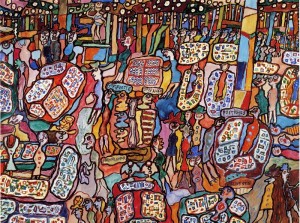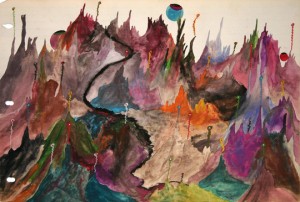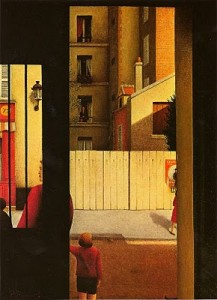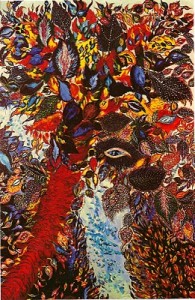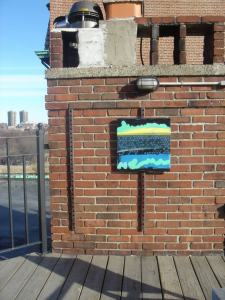In the early seventies a new art movement was christened as “outsider art”. Outsider Art was used to describe, in broad terms, artists who were self-taught and did not feel part of any specific artistic movement or genre. The concept was the artist was working free of any of the mainstream influences and was wholly creating from a unique space “outside”. As a lover of modern art I have found the best of these works to be extremely compelling. Another aspect is these Outsider Artists will use non-traditional materials in their compositions to truly let you know as a viewer you are not seeing something easily pigeonholed.
I was thinking about the concept of Outsider Art as applied to fragrance. In my opinion most of our best Indie Perfumers would not be considered Outsiders because they do and are influenced by the history of what has come before. It makes them no less original but they are trained and they do reflect that. The thought has come and gone but when I recently received three samples from the Portland, Oregon based Slumberhouse it took hold a little more firmly because when I tried Kote, Mur, and Verg I thought that this might actually be the first real example of olfactory outsider art. It is hard to say much about the team behind these fragrances because they describe themselves on the Slumberhouse website as;
“Slumberhouse is a boutique cologne label in the heart of Portland, OR; created and inspired by urban and street culture, art, film and music – especially the new school of hip-hop and graffiti artists. We are a group of young gents who march to our own beat, embracing an absolute disregard for other brands, trends and marketing clichés. Slumberhouse represents an unequivocal love for the art of fragrance making.”
That statement sounds like an outsider artist manifesto and the two of the three fragrances truly do take chances which means like the outsider art I described above these are not going to be for everybody.
Kote is probably the most difficult of the three to embrace. It is full of rough edges and, perhaps, unnecessary intensity. Kote is like an unvarnished piece of wood in a bottle. It has a raw intense teakwood note mixed with a high concentration of tobacco. There is clementine named in the note list but if it is there the tobacco and teak completely overwhelm it on my skin. When I was first assessing the three of these fragrances I thought Kote was going to be the one I liked least. On the strip it just felt too prickly. Then I began to wear it and especially in the heat we’ve been having on the East Coast it became more accessible and then it became downright addictive. Teak is one of those wood notes which is used as a halfway choice between cedar and sandalwood. It is neither as clean as cedar nor as slightly sweet as sandalwood. It is both dirtier and woodier and in the case of Kote with the tobacco leaves it allows for that heady narcotic aspect of tobacco to run hard up against the teakwood and cause a collision of contrasts. We talk about orthogonal notes often but these two really do seem to be coming in at right angles to each other. I am sure there are going to be many who sample this and think it is just too much. I also think there are others who are going to love the intersection of opposites on display in Kote.
Mur is meant to evoke a rustic setting and by rustic setting the Slumberhouse team means barnyard. Now for those of you who are thinking L’Artisan Dzing! this is not so nearly as refined as that. Dzing! is the hint of the barnyard almost an abstract expression of it. Mur is a much more earthy realistic vision of the barnyard milieu. As with Kote the raison d’etre behind Mur seems to enhance the sharper, edgier aspects of the notes to create an almost confrontational kind of fragrance. Mate and cassie are there at the beginning of Mur and the mate in particular tickles my nose with an aggressiveness this demure note does not usually possess. Hay, honey, and beeswax hold the center of Mur. The perfumers work hard to attenuate the sweet aspects of all three of these notes so that what predominates on my skin is a rough fibrous feel of the hay, slightly musty sweetness from the honey which is matched by the waxiness of the beeswax. The base is a strong rooty vetiver in all its prickly edged glory. Mur is a fragrance for someone who wants a more realistic approach to olfactory landscapes.
Verg is going to be the easiest of these three fragrances for most people to like. It was easily the most approachable when I was initially trying all three on strips. The reason is Verg has the closest to a traditional perfume architecture as it is centered around a floral core of neroli which is then partnered with some unusual choices. Early on it is ginger which works with the neroli and the top notes of Verg is probably the most normal any of these Slumberhouse fragrances got on my skin. Tobacco with its sweetness full on display amplifies the floralcy of the neroli in the heart. The base is an unusual mix of raspberry and oakmoss. This leaves Verg in fruity floral territory but it is a rarely traveled part of the territory because these three notes create something I liked a lot more than the run of the mill fruity floral accord out there. The berryness of the raspberry is very evident and the oakmoss adds its unique character and all of this is wrapped around the neroli. The final stages of Verg were something I just didn’t want to see end.
All three Slumberhouse fragrances have above average longevity and average sillage.
The Slumberhouse fragrance team seems to truly enjoy challenging the mainstream notions of perfumery and based on this introduction it seems that I am going to have to pay more attention to the fragrant happenings up in Portland, Oregon.
Disclosure: This review was based on samples provided by IndieScents.com
Thanks to IndieScents.com we have a draw for one sample set of Kote, Mur, and, Verg. To be eligible just leave a comment on who your favorite out of the mainstream artist is or your favorite indiescent.com fragrance. The draw will close July 25, 2011.
–Mark Behnke, Managing Editor

